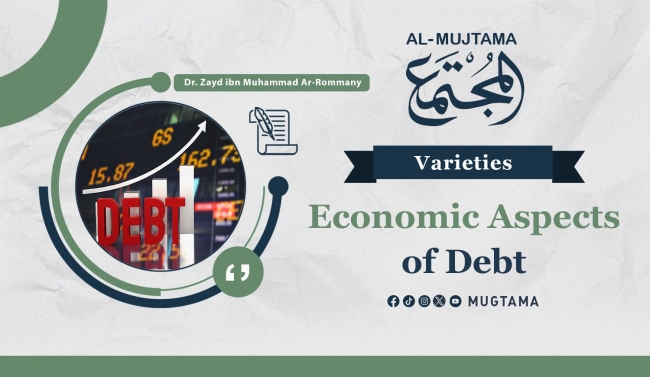Unfortunately, as the psychological expert Dr. Akram Zidan says in his book “The Psychology of Money,” some individuals' psychology views borrowing as a normal, positive behavior where they don't feel ashamed or anxious. They borrow at all times, whether facing financial pressures or not, indifferent to when or how they will repay the debt. They even find it surprising when others demand repayment!
Individuals may exaggerate their borrowing behavior due to the material frustration they can't bear or cope with its psychological, economic, and social effects. They lack the ability to manage the financial pressures they face, leading them to see borrowing as fulfilling two basic functions: eliminating the feeling of deprivation by meeting some of their material needs and helping them escape the primary source of frustration by thinking about how to repay the debt.
Individuals often fall victim to debt when driven by an exaggerated desire to buy things and possess everything, whether necessary or not, needed or not, within or beyond their financial means. They are obsessed with shopping and suffer from shopping madness, buying whatever they desire, whether with their own money or others', as long as they can buy it. Naturally, this obsession drives individuals to borrow a lot of money.
Those obsessed with buying—buying things they don't even need today—will be forced tomorrow, when crushed by debt, to sell things they may desperately need.
Additionally, individuals sometimes borrow to keep up with social circles of friends and peers, especially if the individual belongs to a social and economic class lower than that of their friends and peers. Borrowing serves two fundamental purposes for the individual: eliminating feelings of inadequacy and remaining part of society.
Therefore, borrowing driven by social conformity often increases from adolescence to early adulthood. It's rare to find it in adulthood as a result of social conformity; at this stage, it's driven by other reasons directly related to economic and financial reasons for facing crises or managing daily expenses in times of hardship.
Davis and Lee found in their study “The Structure of Attitudes to Student Debt” that debt is more prevalent in low classes with lower incomes. The study also explained that borrowing behavior is age-related, and an individual's attitudes toward this behavior change according to the life stage they're going through. In childhood, borrowing behavior is completely absent; many children don't even understand the meaning of the word “debt.” However, as adolescence begins, individuals start to grasp the concept of debt and may start to deal with and gain experience handling it.
The researchers indicate that debt behavior increases during college, and to understand the dynamics of debt behavior, we should apply it according to life cycle theory and behavioral theory, particularly concerning attitude changes.
Lunt and Livingstone, in their study titled “Everyday Explanations of Personal Debt,” suggest that the media exerts a kind of advertising pressure on consumer behavior, pushing them towards more purchases. Under the pressure of necessity and temptation, consumers resort to borrowing to meet their needs.
In short, debt is a manifestation of financial weakness and succumbing to the pressure of necessity, often leading to stress and fatigue.
-------------------------------------------------------------


